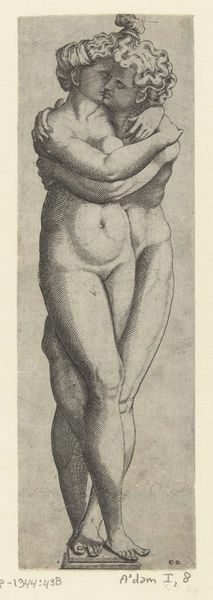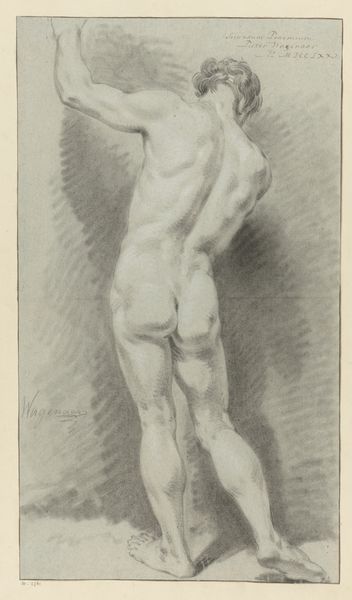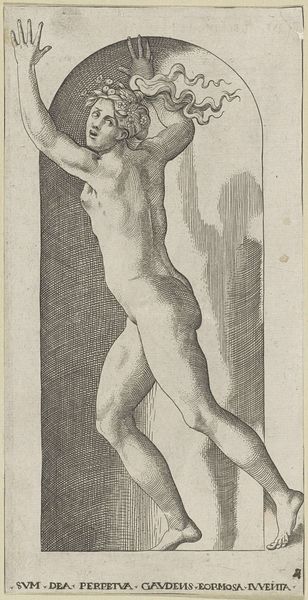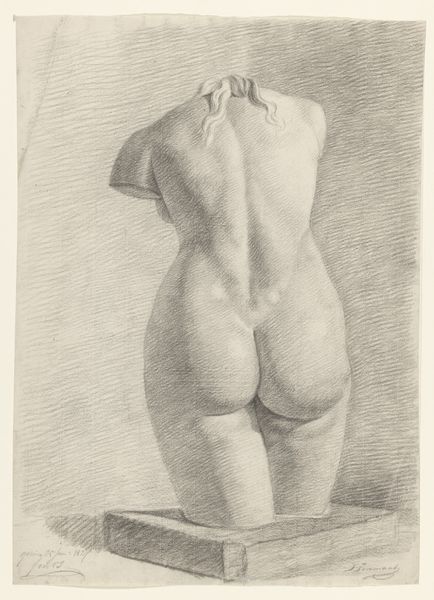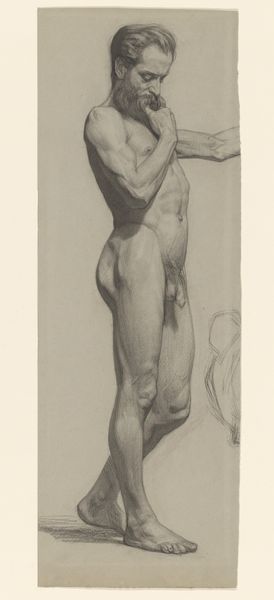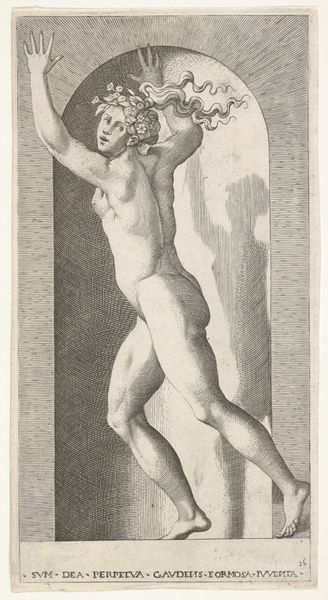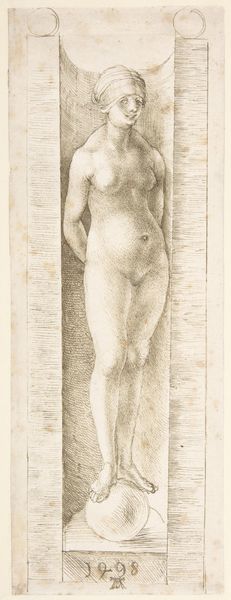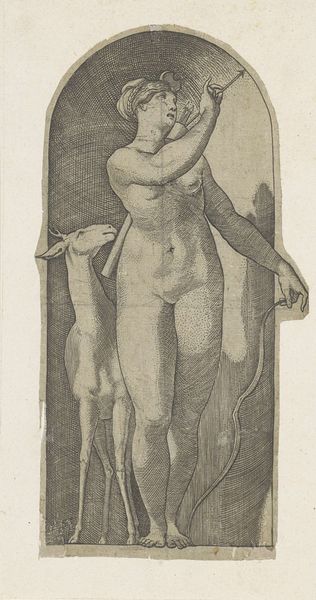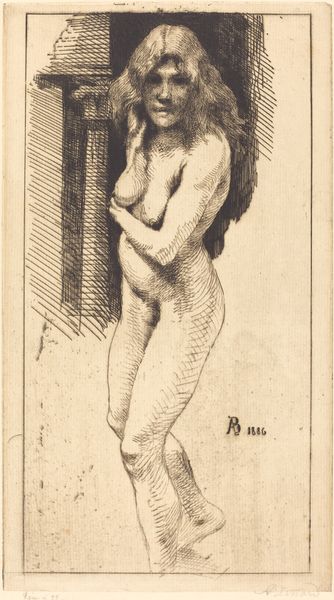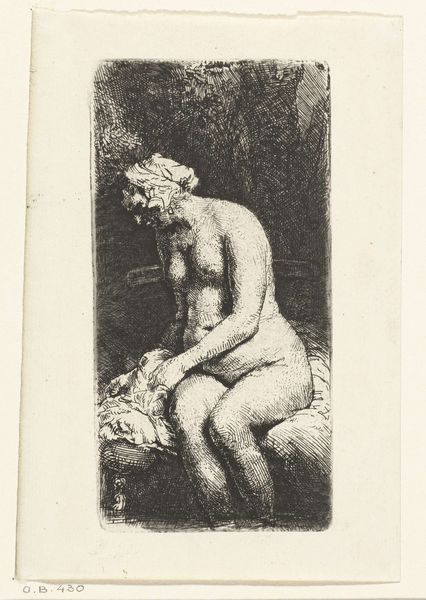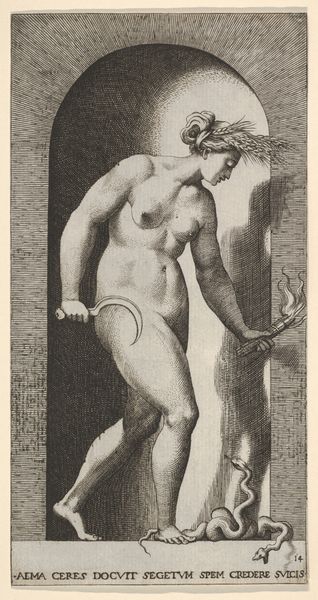
print, etching, intaglio, engraving
# print
#
etching
#
intaglio
#
old engraving style
#
classical-realism
#
figuration
#
history-painting
#
nude
#
engraving
Dimensions: height 186 mm, width 48 mm
Copyright: Rijks Museum: Open Domain
Curator: This print is titled "Het genie," which translates to "The Genius." Charles Philippe Campion de Tersan created this etching in 1765, using an intaglio technique on what looks like paper. The composition portrays a standing nude figure, seemingly male, with a hand mirror held aloft. Editor: The overall impression is peculiar. The figure's exaggerated musculature strikes an odd contrast to the rather delicate rendering of the facial features. What does that visual dichotomy communicate? Curator: That juxtaposition is part of the era's Neoclassical aesthetic, borrowing heavily from classical antiquity's heroic form, and perhaps referencing the tradition of representing abstract concepts, like genius, as idealized human figures. Editor: Still, there's something inherently… exclusive in such an idealized, racialized depiction of genius, perpetuating a power structure that favors specific physiques and abilities, as evidenced in historical exclusions. I wonder what this means for how women or people of color, would encounter this representation of "genius"? Curator: And yet, in many spiritual traditions, nudity also symbolizes vulnerability, honesty, and pure potential. Perhaps Campion de Tersan's choices aren't purely exclusionary, and attempt to explore an inherent humanity common to all "genius" Editor: The broken torch and animal are further symbols worth considering. A symbol of death? Perhaps he alludes to ideas cut off too soon? Or is that about what 'genius' can crush? Curator: Historically, broken torches represented death, certainly, but consider the torch held by the serpent in alchemical imagery, it symbolizes transformation and transcendence through inner work, in that frame, crushing the torch beneath one's heel shows triumph. And who is that animal? What's it doing there? Editor: A complex visual code then, reflective of philosophical and societal preoccupations of its time. Examining this work helps illuminate the persistent challenges around access to resources, while showing how ideas are created from images as we interact with them, today and beyond the 18th Century. Curator: Absolutely. "Het genie" stands as a visual encapsulation of not just individual brilliance, but the historical conditioning of such an idea. What we’ve examined hopefully helps it reflect back toward us, and what defines it for each viewer.
Comments
No comments
Be the first to comment and join the conversation on the ultimate creative platform.
